Meta Title/Description Guide: 2024 Best Practices
By: Dileep Thekkethil | Updated On: February 21, 2024
Table of Contents
Have you recently optimized the meta title and meta description of your website as part of the on-page optimization effort?
Did the words truncate when Google displayed the same in the search results?
If yes, you are not alone!
A majority of the meta titles and meta descriptions that SEOs write get truncated due to the lack of understanding about how Google SERP works.
Even the SEO experts tend to make this mistake, which stemmed from an age-old belief that Google considers 70 and 160 as the character limit for the title and description, respectively.
Let us drive right into the pertinent fact that can debug this misconception.
There is no official document from Google that says you must consider 70 as the character limit of title and 160 as the limit for the meta description.
Google cares little about the characters that you use but is more watchful of the number of pixels used by each character.
However, popular WordPress plugins use this benchmark, especially the Yoast plugin, creating a misconception about character limit of meta title and description.
Want to see your website at the top? Don’t let your competitors outshine you. Take the first step towards dominating search rankings and watch your business grow. Get in touch with us now and let’s make your website a star!
Meta Title
A meta title tag is an HTML element on a webpage that specifies the title of the page to search engines.
The title tag is supposed to accurately describe the content of the page and Google displays it on SERPs as a clickable headline while displaying the results.
If you have been watchful of what has been happening in the last two years, Google has been testing a lot with different ways to showcase titles for its users in SERPs.
They have every right to do so because the text within the title and description is what opens the door way for people to the endless possibilities of search.
Google, for long, has been using its discretion to decide whether to choose the meta title or the H1s in SERPs. It has to be also noted that Google has been tweaking the meta title since 2012 to make it easier for users to recognize relevant pages.
Such changes were inevitable as SEOs tried to over-optimize the meta titles by stuffing it with a lot of keywords. As a result, users were left with text that failed to reveal what’s within the content.
Why is Google Ignoring Your Meta Titles?
Google is always leaning towards the satisfaction of the users visiting the sites listed on the SERPs.
In fact, that’s what runs all their associated businesses and they don’t want users to leave with a bad impression.
For long, SEOs have been manipulating Meta titles to alter the search results on Google.
Most of the time, keywords were stuffed to get the immediate attention of the users but when they actually visited the page the content failed to meet their actual intent.
Since the title displayed on the search results page (title link) is the primary factor that aids users to decide which website to visit, Google wants only the most relevant titles to appear.
The solution they found to this pressing issue is to fetch the titles from the content so that there is less chance of irrelevant titles being generated.
According to Google, if it finds the meta title inappropriate for the page it fetches the most prominent title within the content or the anchor used to link to the page as the Title link.
Here are some circumstances in which Google might decide to skip your meta title and use H1 or other prominent text within your page as Title Link in SERP.
- Every page on your site has the same title
- Vague descriptors like “Home” or “Profile”
- Titles stuffed with keywords (Example: SEO Agency | SEO Company | SEO Service Provider)
- Repeated or boilerplate text
- Unusually long meta title text
How Long Should a Meta Title Be?
According to the study conducted by Moz, Google’s display titles max out (currently) at 600 pixels.
Research done by the internal team at Stan Ventures found that titles start truncating between 525- 535 pixels on Desktop, but when it came to smartphones, the results were surprising!
Meta Title Length Example – Desktop
Meta Title Length Example – Mobile
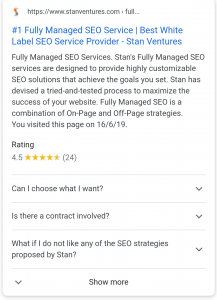
We found that the titles that were cut short in the desktop search appeared fully in the mobile search.
A deeper dive into the mobile search results revealed that Google displays titles that go beyond two lines.
It was also noticed the title displayed in the mobile search included the company name as a default suffix for all the results.
This holds true even for those pages that have force-removed the brand name from the Meta Title.
We found that only one in twenty mobile search results had the title truncated despite flouting the age-old character limit dogma that SEOs have been adhering to for so many years.
Importance of Meta title in SEO for any Blog or Business Site
Title tags are the first thing that your visitors interact with before visiting your site from SERP.
Title tags are primarily used in three main places: SERPs, web browsers, and social networks.
1. SERP
Even if your site ranks well on SERP, your title tag plays a vital role in determining whether a person will click to visit your page or not.
The title tag should convey the information present on your web page clearly and concisely.
2. Web Browsers
Your title tag is displayed at the top of your web browser and helps you recognize the associated web page easily when you have multiple tabs open.
3. Social Networks
Social network sites use your OG title tag and OG meta description to display when you share your web page.
Unless you write an attractive and meaningful meta title for the web page you want to share socially, people won’t be drawn to click on it.
Tips to Optimize for Meta Title
- A title tag is an important on-page SEO signal. Ensure to add the focus keyword in the title tag for SEO benefits.
- A title tag that starts with the keyword performs better than title tags with keywords towards the end.
- Your Meta Title and H1 can be different. Google considers the H1 tag as a secondary signal to measure topic relevancy.
- Adding LSI keywords in the meta tag helps Google understand the context of words that could possibly have multiple meanings.
- Write descriptive and concise but do not to stuff it with keywords.
SEO Best Practice to Write Good Headline for Blog or any Website
Here are some useful recommendations to write good headlines for your web pages.
Watch the Length of Your Meta Title
To ensure that your meta description appears in the SERP without any word or character being cut off, it is essential to keep the meta title length under 600 pixels.
It should also be kept in mind that search engines may choose to display a separate title tag from the one specified by you. This happens when the title fails to convey the message within a page.
Don’t Stuff Keywords in the Title Tag
If you deliberately try stuffing keywords in the SEO title, it will result in poor user experience and your page may not show up on the search at all.
Try to write meta titles that are meaningful and has the focus keyword placed very strategically in it, preferably in the beginning.
Use Unique Meta Titles for Every Page
When you add unique meta titles for your web page, it attracts people to click on them and also gives an idea to the users about the content inside the page. Additionally, unique meta titles can help to avoid keyword cannibalization.
Vernacular and Multilingual Sites Must Use the Primary Language When Writing Title
In the last week of May 2022, Google introduced an algorithm tweak wherein it will display the title link of a page based on the primary content in cases where a website has provided a title element in different languages.
Google says if a website is repeating the exact phrase in two different languages in the title element, for example, गीतांजलि की जीवनी – Geetanjali Biography in Hindi, the system will display only select the Hindi headline text as it’s the primary language of the page.
Additionally, the transliterated title element, which uses a different script or alphabet to convey the message, will now be ignored. Instead, Google will use the primary script within the page to create an alternative title.
For example: The English transliteration “jis desh me holi kheli jati hai” of a Hindi poem will be ignored as the title link, and instead, Google will use the जिस देश में होली खेली जाती है, which is the Hindi version of the same that’s appearing in the primary content.
What Google wants the users to do is to create Titles elements that match the primary language of the content.
Insert Essential Keywords in the Beginning
Keywords added at the beginning of the meta title have more value than others. That’s why it is recommended to begin your meta title with the focus keyword.
Utilize Your Brand
If you have a well-known brand, you can add it towards the end of the meta title. In some cases, especially on Mobile devices, Google may automatically pick up brand names to be displayed after the meta title.
Keep Your Customers in Mind
It is essential to keep your customers in mind while framing meta titles for your web pages. It is the first thing they interact with when they come across your web page on the SERP.
Therefore, you need to ensure that it is written accurately and is attractive enough for them to click.
How Google Creates Title Links for Search Results?
The titles link of the pages in Google search are automatically generated by Google’s algorithm based on different factors.
Before finalizing the Title link, the algorithm fetches the meta title and then tries to find its relevance to the content within the page and external references that link to the page.
When the algorithm determines a meta title isn’t helping the users to understand what’s exactly inside the page, it bypasses the meta title suggestion. Instead, it tries to find relevant text within the page to create a title that it deems best for the page.
Here is how Google automatically determines the title link when it finds a questionable meta title.
- Check H1 or other H tags that are within the page
- Check for content that’s stylistically prominent on the page
- Anchor text on the page
- Anchor text within an external page that points to the page
Meta Description
What Should Be the Length of Meta Description?
Google has tested a few different meta description lengths in the last few years.
At one point, Google even decided to buff up the character limit of the Meta Description to 320 characters, which made a significant change in the overall aesthetics of the search engine results page.
The increase in character length of the Meta Description made the SERP text-heavy and less pleasing to the eyes (this could be a very personal opinion).
However, after a few months, Google reverted to its old meta description length of 160 characters, and this could be an indication of Google taking into cognizance of the popular sentiments.
All this said, there still exists a fair bit of confusion among SEOs regarding the character length of the Meta Description. Google has categorically stated that the Meta Description is not part of its ranking factors.
So, what is the purpose of the Meta Description if Google doesn’t consider it as a ranking factor?
SEOs must now consider Meta Description as a message sent across to the users.
It must highlight why they should consider clicking on your site instead of the other competitors that are featured in the SERP. It’s time that SEOs put in the effort to make Meta Descriptions compelling and informative, rather than simply stuffing in the keywords.
Unlike what we found with the Meta Titles, Google’s search algorithm seems to be following the same rules when it comes to displaying Meta Description on desktop and mobile devices.
We found that the Meta Descriptions for desktop and mobile search results tend to truncate after 930px.
However, SEOs should also consider the Date and other Rich Snippet elements that they have enabled while writing the Meta Description as these features take up some real estate.
Another interesting find was that the descriptions that Google generated on its own based on the intent of the search query have more characters displayed.
Meta Description for Question-Based Search Queries
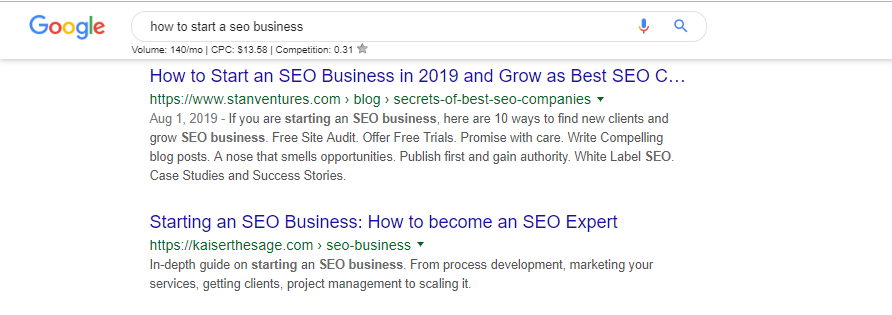
We found the descriptions that Google self-generates for high-authority websites based on the context and intent of the search query may be as large as 1500 px.
This is the same for both smartphone and desktop results. In addition to this, most of the question-based search queries featured results that have a Meta Description of 1500 px in the first three positions.
Importance of Meta Description
- Meta descriptions act as an overview of your page content.
- A compelling meta description can improve the CTR of your site and boost its organic rankings.
- Refreshing the meta description for pages with outdated content can bring more traction to them.
- A well-written meta description that is optimized for user intent can increase conversations significantly.
SEO Best Practice to Write Good Descriptions for Blog or any Websites
Write a Compelling Copy
A compelling and accurate meta description can help users understand the contents of the page and make sound decisions on whether or not they should be clicking on the link.
Use Target, But Don’t Overdo
Include your target within your meta descriptions but make sure to summarize what’s within the page rather than adding the focus keyword multiple times within the description.
Avoid Duplicate Meta Descriptions
Writing similar meta descriptions for multiple web pages is very misleading and a wrong practice to follow.
Try writing unique descriptions for all your web pages and ensure to optimize them with target keywords for improved online visibility
Nobody wants to read poorly written meta descriptions that fail to satisfy user intent. Nowadays, Google fetches the meta description from within the content to match the user intent. But still, it is essential to have a meta description so Google can understand more about the page and the content.
Google’s Recommendations
Google in August 2022, updated its document about snippet optimization by adding bad and best practices of meta description optimization.
According to this document, Google wants the meta description to be an actual representation of what’s within a page.
This could be the possible reason why Google ignores the over optimized descriptions and instead creates a random one based on the content within a page.
Google has categorized meta descriptions in bad and good in this particular document and have four types of bad and good practices.
Bad Meta Description Examples
- List of Keywords
A few sites add meta descriptions with excessive keywords added to it. While the purpose of such descriptions are to rank higher, they fail to fulfill the primary purpose of having a meta description, which is to summarize what’s inside the page.

- Identical Meta Descriptions
A handful of sites according to Google don’t bother to add unique descriptions. The same description repeats in all the pages despite them having unique content. In such cases, Google’s algorithm will autofetch random text based on the user’s search query and display it in search results.

- Meta Descriptions that Doesn’t Summarize a Page
When the focus is heavily on ranking a particular keyword, webmasters tend to write descriptions that are non contextual to the content within the page. Google says such attempts are futile as these descriptions are ignored by their algorithms.

- Thin Descriptions
This is more self explanatory. There are websites that add just one keyword phrase as the meta description, giving no clue to the users what’s conveyed within the page. Such meta descriptions don’t get featured on snippets as Google will go with autogenerated alternatives.

Good Meta Description Examples
- Good Meta Description for Businesses
The first example of a good meta description is pointed at business owners who try to over optimize their business landing page by adding product keywords and not focusing on what they sell. Google says most users who search for a business want to know details about the timing, location and what they can shop. 
- Good Meta Description for News sites
Google seems like wanting news websites to use an inverted pyramid style meta description. That means the users get the gist about the article in the search snippet and they can continue reading it in-depth by clicking on the link.

- Good Meta Description for Blogger and Content Creators
Google wants content creators to maintain a discipline to summarize the ideas conveyed within the article and not beat around the bush trying to embed keywords wherever possible. This also means not using clickbait descriptions that conceal what’s inside the page.

- Good Meta Description for a Product Page
Many e-commerce websites fail to come up with meta descriptions that give the users the overview of the products they sell. In most cases, they try to dump a keyword and several variations of the same improve the rankings. But Google suggests including the product details, the features and benefits in the description so that users know what they would see after landing on the page.

FAQ
How to Write Meta Description and Title for SEO?
Google is in a transition stage, and a lot of incremental changes are expected to happen concerning the User Experience in the coming years.
With the recent Google algorithm updates focused on content, context, and relevance, Google is reiterating the importance of quality content as the benchmark for ranking.
Meta Title and Description were the two SERP features that SEOs misused. Adding keywords to the title and description may not yield the same results that SEOs got a few years back.
This is because Google search results are more focused on context, relevancy, and user interaction. This is why it’s important to optimize the title and description based on the content within the page.
Even though keywords matter, they are now weaved together with context and relevance. Ensuring that the Meta Title and Description provide the best answer to the search query will give a boost to the page’s visibility on the SERP.
If you’re wondering what character length to follow while writing the Meta Title and Description, it’s ideal to follow the mobile standards.
Since users who access the web through smartphones are soon to overtake the ones using the desktop, it’s ideal to optimize the title and description for mobile devices and adapt it to the desktop.
When does Google Re-write Meta Title and Description?
Are you see an increasing number of pages displayed in Google SERP with different titles and descriptions? This could be an indication that your existing meta title and description are not fulfilling the real intent of the page.
Gary Illyes from Google during the recently concluded Webmaster Summit said that Google is forced to re-write the meta title only during the worst-case scenarios and the number of times Google does it is less.
Google re-writes the Titles and descriptions only when the website tries to tell Google users a totally different story than what they have inside the webpage. Google is conscious not to take their users to a misguided page, hence, the search engine giant takes the text within the content inside the page and create titles and descriptions.
However, if you see Google doing the same to some of your webpages, it could be an indication to rewrite the existing Meta Title and Description. Over-optimization of the title and description is the usual culprit that forces Google to re-write.
You May Also Like
Keyword Cannibalization: How to Identify and Fix the Problem
Are you optimizing multiple content pieces to rank for similar keywords? BEWARE. Your site may fall prey to keyword cannibalization. Keyword cannibalization can hurt your site’s search engine ranking and bring down the visibility of your important pages. Fret not. You can recover your site from the bottlenecks of keyword cannibalization. The sooner you act, … Keyword Cannibalization: How to Identify and Fix the Problem
How to Improve CTR (Click Through Rate) in 2024
Checkout some of the most effective ways to improve the CTR (Click Through Rate) which is one of the hidden search engine ranking factors.
How to Reduce the Bounce Rate in 2024
High bounce rate is a pressing issue faced by website owners as soon as they start seeing traction to the website.

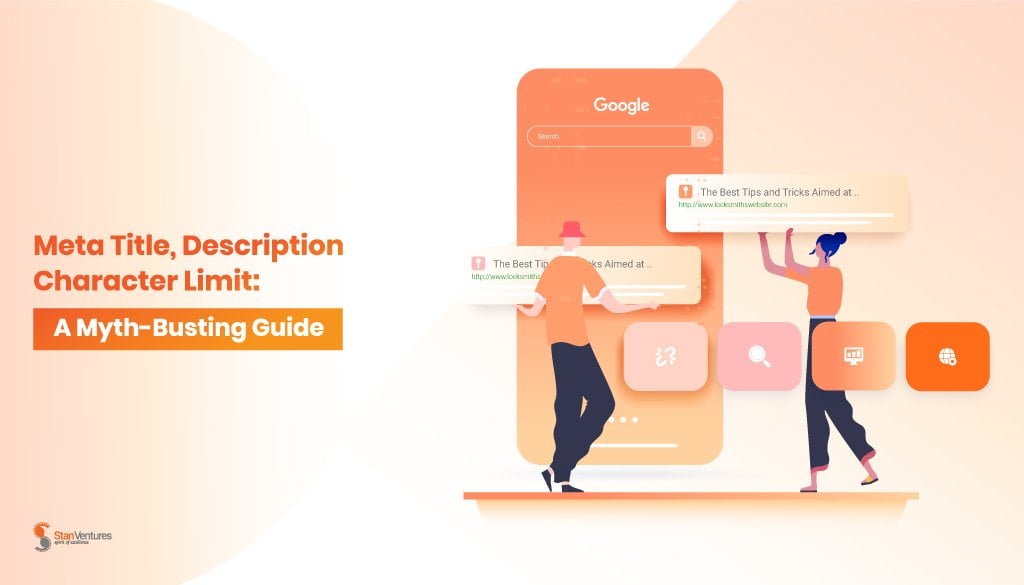

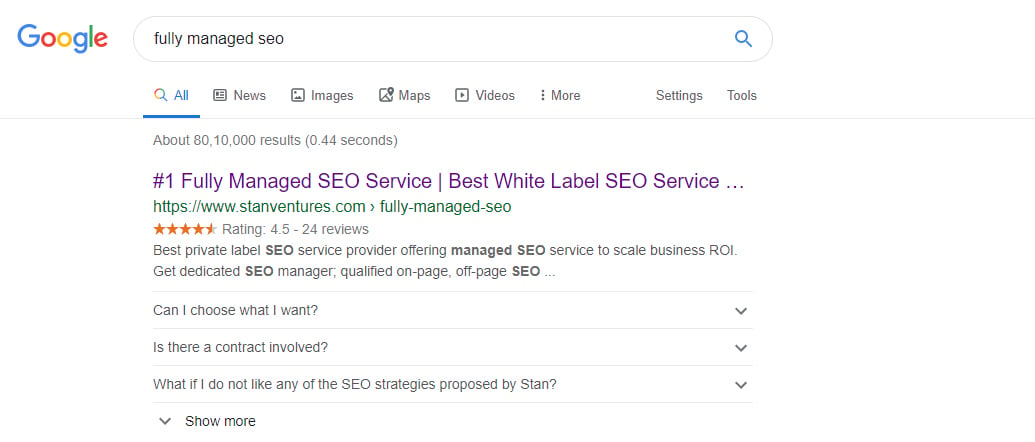





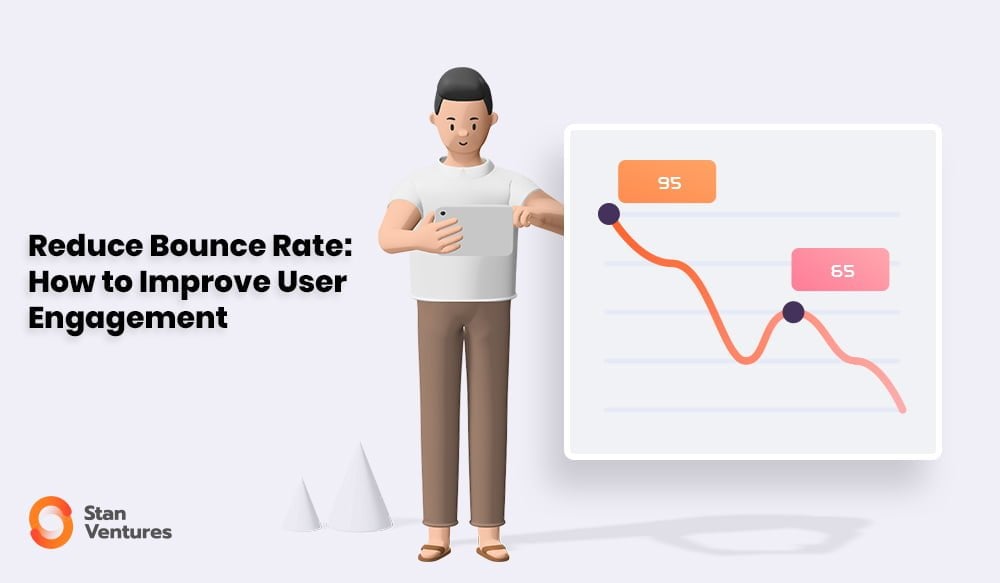
Comments
14 Comments
Thanks for sharing this great information. I really like your post.
Please provide complete metadata list for Google search engine. Which tags is more important.
The first time I understand very well about meta title and meta description length, I hope I will see more updates in the future, thanks for sharing.
great site
Meta title and meta description topics are helpful, Every one can understand very easily.
Thanks for sharing us.
Thank you.
I feel strongly about it and really like mastering more on this subject. If feasible, as you acquire experience, would you mind updating your blog with much more information. It is very helpful for me. thanks for sharing an amazing information.
Your Post will help me to define SEO friendly meta title and description for my website thank for sharing this great information.
Post will help me to define SEO friendly meta title and description for my website thank
Your Post will help me to define SEO friendly meta title and description for my website thank for sharing this great information.
Your Post will help me to define an SEO-friendly meta title and description for my website.
Thank you for sharing this Informative information.
Great to hear that Ram.